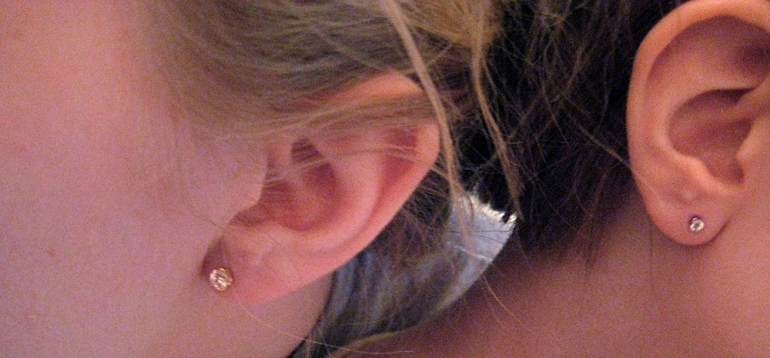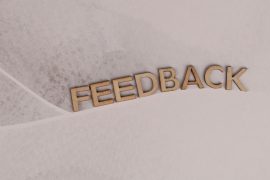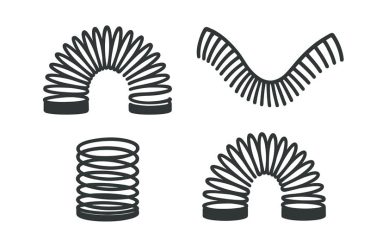Late one Tuesday afternoon in March 2020, I was at the Sydney Conservatorium of Music busily preparing handouts for the following morning’s solfège tutorials. Students enrolled in the Aural Perception (AP) units I coordinate attend two weekly classes: a lab tutorial, in which they learn to see what they hear through transcription; and solfège, where sight-singing tasks train students’ ability to hear (and vocalise) what they see. Both classes aim to develop a strong mind’s ear – an essential quality for any practical career in music. After a long day, pen-in-hand, teaching lab classes, I was looking forward to some singing with our plucky 1st-years the next day.
As my frustration grew at the photocopier’s refusal to auto-detect the size of my page (A4. It’s always A4!), I heard a voice summon me from a nearby office. Wondering whether the abuse I’d directed at the copier had been vocalised (or for my mind’s ear only), I sheepishly wandered in to find several of our senior staff deep in conversation. I was brought up to speed: “There’s a strong chance that the University will be closing due to the pandemic. Do you believe we can teach Aural Perception online?”
I had been asked the same question a few weeks prior. Then, it had been in relation to our ability to cater for just a handful of students who had been affected by the hastily closed national borders. My response at the time had been simple: “I don’t see how we can.” Now, however, with casual staff employed and student learning well under way, the consequences of having to stop everything would be dire. Like it or not, a new era of teaching and music-making was about to begin and it was time for us all to reinvent ourselves. Thus, in a backflip of Trumpian proportions, my response was again simple: “I don’t see why we can’t.”
Sure enough, the Con was shut within a week. Like most across the sector, we switched on our webcams and simply made it work through a combination of Zoom lessons and asynchronous instructional content. Yet as it became clear that this was a long-term lockdown, a new question emerged: how do we assess our students in an online environment?
In AP, students have traditionally taken two exams: a ten-minute oral solfège exam, held one-on-one with an examiner; and a one-hour written lab exam. The first could be moved online easily enough. However, the lab exam involves students transcribing a range of excerpts played in quick succession – and they must be able to do this entirely by ear, without vocalising and without the aid of any external instrument. These exams allow students to show that they understand what they’re hearing by writing it down, demonstrating a range of skills from memorisation to notation via theoretical understanding. Without physical supervision to ensure integrity, these exams would be impossible to recreate.
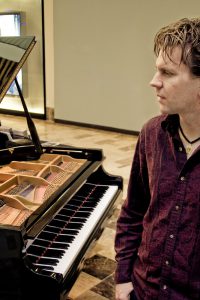
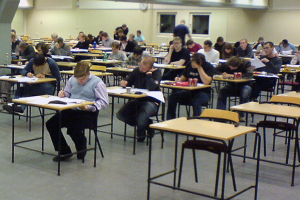
It was time to innovate. I decided to expand the oral exam to include listening tasks. In lieu of transcription, we would directly assess students’ abilities to enact specific processes (such as identifying harmonic functions, rhythmic patterns, and tonal clichés) – rather than merely evaluating the final product (a completed transcription) – thus bypassing the paper-based written response. This would also reduce the overall number of assessments for students. I saw in this a tremendous opportunity with potentially far-reaching consequences: to finally make that dreaded photocopier redundant. And, arguably more importantly, to adopt methods of examining AP students that are more direct and authentic to real practice.
Using simple HTML, CSS, and JavaScript, I developed an interactive webpage that would enable examiners (sharing their browser window over Zoom) to click through a series of questions with embedded excerpts of both notated and recorded music. Depending on the question, students would sing or speak their answers, and in under 20 minutes the examiner would gain comprehensive insight into the workings of that student’s inner musical ear. Furthermore, the code could be adapted to cater for each individual unit of study, with only slight tweaks to the wording of questions and the complexity of musical excerpts.

Assessing entire cohorts of students (more than 100 in some units) individually required a schedule spread over multiple days, raising separate integrity concerns. By transitioning to a face-to-face online format, we had already eliminated the possibility of students relying on external aids. However, we could not prevent questions from later being discussed and shared with prospective examinees. As a safeguard, I prepared a large pool of possible excerpts for each question. I then wrote a script that, triggered by a click of the ‘refresh’ button, would randomly select the excerpts to be used for the next click-through – thus generating an entirely new exam for the next student to enter the Zoom room.
Randomisation at the question level made it incredibly unlikely that two students would complete the same exam, with ten questions and up to eight versions of each. Excerpt reference numbers were subtly embedded on the shared screen, and corresponding answers provided separately, so that examiners knew what to expect (see below).

This approach to online examination was used in both 2020 semesters, and feedback from students and colleagues was overwhelmingly positive. Students were happy to allow an examiner into their homes (virtually) for 20 minutes, for the opportunity to demonstrate all that they had learned throughout the semester. Furthermore, the distribution of marks confirmed that an oral examination is a valid substitute for the traditional written exam. Reflecting on the future of examinations in AP, I see great potential in discarding paper-based exams and using technology as a means of further developing a dynamic and adaptable oral examination environment that facilitates direct insight into our students’ practical musical skills.

